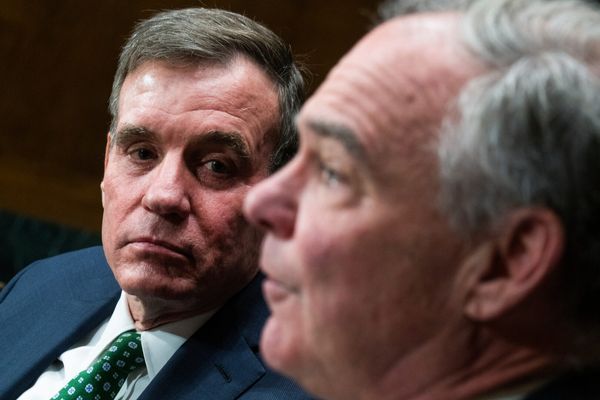Is it any wonder that London bridges are falling down? For hundreds of years, they have worked tirelessly to carry the load of one of the world's busiest cities.
But many of the 35 bridges that span the Thames were originally built to carry horse and cart, and the strain of modern-day traffic is taking its toll.
The magnificent Hammersmith Bridge is a case in point. It could have crumbled into the Thames below if it had not been urgently shut in April 2019.
The bridge is nothing short of a Victorian-era masterpiece. Crafted out of cast iron, it was officially opened in 1887.
For more than 130 years it has withstood all that has been thrown at it, but breaking point came after a particularly warm summer saw large cracks worsen.
That, coupled with the weight of 22,000 motor vehicles and 16,000 pedestrians crossing it every day, was too much.
It closed, first to traffic and then to pedestrians, cutting off thousands of residents who rely on it to go about their everyday lives.
Toby Gordon-Smith, who uses a wheelchair, is one of them.
He lives a stone's throw from the bridge in the suburb on Barnes, and can see his office in Hammersmith on the other side of the Thames from his ground floor flat.
When Hammersmith Bridge was open, it took him 10 minutes to get to the office. Now it can take up to an hour and a half.
"I think I could probably get to my office from 80 per cent of London quicker than I could get to it from here and it's visible from here. It's ridiculous," he told the ABC.
He said the bridge had been poorly maintained since the local Hammersmith and Fulham council was given control of the structure during the Thatcher era.
"We could see this coming," Mr Gordon-Smith said.
No quick fix
There are no quick fixes for the Hammersmith Bridge – the repair cost is estimated at around $270 million, which amounts to the entire annual budget of the local council, and it could take up to six years to reopen.
And the matter is politically sensitive.
It is not the residents of Hammersmith who are so deeply inconvenienced, but rather those in Barnes and beyond, in the borough of Richmond-upon-Thames.
"This is a major piece of infrastructure in a major international city, it is humiliating for the UK that you can't even cross a river in the middle of their capital city," Michelle Coulter, another infuriated resident, told the ABC.
The 10-minute jaunt across the bridge with her children to the classroom is a much more arduous bike ride now.
"There was a survey done recently and 80 per cent of people who responded said the closure of the bridge had had a negative impact on their mental health," Ms Coulter said.
"I know of at least one chemotherapy patient who has given up chemo because just doing the journey [to the hospital] is too difficult."
It is not inconceivable that other bridges could suffer the same fate.
Vauxhall Bridge was closed for months last year when it underwent urgent repairs. London Bridge was also temporarily shut while undergoing work.
And Tower Bridge caused traffic chaos in August 2020 when its 1,200-tonne bascules — the sections which allow the drawbridge to open — became stuck.
"A lot of our structures that we have in this part of the world are approaching or have already exceeded what is known as their original life span," Luke Prendergast, an Assistant Professor of Civil Engineering at the University of Nottingham explained, pointing to the unrealistic expectation that bridges are built to last forever.
"I don't think we would expect to still have Westminster Bridge in place in 1,000 years' time, it probably will have been changed by then and so when you're talking about time scales you need to be a little careful and realistic about what to expect."
London's bridges are facing a perfect storm, according to Dr Prendergast with an increase in traffic and climate change putting great strain on the ageing structures.
"We are kind of at a critical juncture," he said.
"It's not really a surprise to me that these structures are under distress … you would expect to have to repair damage to our houses after a storm event, for example."
Repair or replace?
The Hammersmith Bridge needs a great deal of tender loving care. Even rowboats cannot pass beneath it for fear it will collapse.
But repairing it is not the only option. Many residents think it simply needs replacing.
"I think it's a great opportunity to build a contemporary, modern structure, that nods towards the heritage of the original design," Mr Gordon-Smith said, noting that cast iron is not used for construction anymore.
Michelle Coulter said while a lot of locals would like to see the bridge replaced with a structure fit for purpose that would also come with added complications.
"It is protected and there is a lot of vested interest in keeping that bridge there and repairing it," she said.
"But we need to get started with these repairs and we can't start the repairs until the funding has been agreed.
"At the moment we are just sitting, waiting and nothing is happening."
One plan is for the local council to charge a $5.50 toll to recuperate costs and speed up the restoration process, a hefty bill for a just-over-200-metre stretch of road.
And Transport for London said Uber Boat ferries would run a temporary ferry service from the end of the UK's summer, carrying up to 800 passengers between both banks during peak times for a cost of $2.80 per fare.
But Mr Gordon-Smith said the Thames tidal flows would be problematic.
"It goes up and down around three metres every day," Mr Gordon-Smith said, pointing out the ferry capacity would also never be great enough to move the mass of people needing to cross.
Ms Coulter does not believe it is a solution either.
"We need a bridge to cross that river," she said.
"And it has to happen soon."







